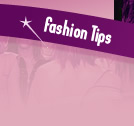![]()
![]()
![]()
![]()
![]()
![]()
![]()
![]()
![]()

![]()
![]()
ArticlesClothing Fashions Are RegressingMany people currently agree that the current trends in clothing are quite appalling. The reason for this is not, of course, that there's anything inherently wrong with the clothes, but rather the fact that the clothing fashions of the 80s went out of style for a good reason. Now the 80s fashions are considered, by most who remember the 80s, to have been downright hideous and indeed, current fashions are too reminiscent of the 1980s for most people's comfort. What exactly is meant by 80s-style fashions? Well, there are lots of different angles from which to look at this question. If you look at hair, you will remember that hair had infinitely more body to it in the 80s than it does now. Current hair trends seem to be less artificial, letting the hair fall more or less the way it naturally falls and calling it good. In the 80s, hair was not only cut in layers, but also permed into waves, and, most notably, the bangs of the 80s. Perhaps not everyone remembers the bangs of the 80s, when the top layer was turned upwards and sprayed (with a great amount of hairspray) into an upward turned wave. As odd as it sounds, and as unnatural as it sounds, the hair actually stayed like this virtually all day because of the vast quantities of hairspray put on for this specific purpose. After curling up and spraying the top layer, the bottom layer was curled into a downward-turned wave, and again sprayed with hairspray. In short, hair had a lot of body in the 80s; the clothing, unfortunately, did too. For example, a skirt in the 80s had its own body; it did not accent the body of the person inside it, instead, it had its own body, flouncing outward from the body in varying spots. Similar to the hairstyles, 80s clothing had a lot of body. Sleek A-line skirts were unheard of and socks were not socks unless they were slouched and worn at least two pairs at a time. Frighteningly enough, these fashions are coming back in current clothing trends. A good definition for this current fashion is that it ignores the principle of economy of materials meaning that extra fabric is used in addition to the fabric needed to cover the body. For example, skirts have multiple vertical folds that are asymmetrical and essentially formless. Belts are 3 inches thick and do not go through belt loops - they are essential necklaces for the waist. Sweater collars do not simply turn down; they turn down, and cover half of the sweater with a doubled layer of sweater. In addition to affecting clothing so deeply, handbags have suffered the same 80s revival; they consist of more metallics than material. In short, the reason why is unknown, but the 80s are almost back, as seen in trends of clothing and accessories across the US and Europe. Dustin Cannon is owner of JustArticlesVIP.com and writes on a variety of subjects. To learn more about this topic Dustin recommends you visit: Amber Jewelry Fashion How Fashion Merchandising School Can Get You a Fashion Career - Describes how Fashion Merchandising School can help you gain entry to a career in Fashion. Analysis of Chinese Sport Shoes Market in - According to analysis of Chinese sport shoes market in 2006, Nike, Adidas, Anta, Li-ning and Pepsi has become the five brands of sport shoes most highly evaluated by customers. Start Your Prom Dress Search Online And Save Time - It is Prom Night, are you prepared for this long awaited event? Selecting a prom dress is perhaps the most exciting element of preparing for the prom. Hair Style Trend Hairdos to Complement Your Crowning Glory - Hairstyles can make you or break you. Pashminas are the ideal fashion accessory in changeable weather - This article talks about the practical benefits of wearing a pashmina in changeable weather. more... |
![]()
![]()
ęCopyright 2025 i-textile.com All rights reserved.
Unauthorized duplication in part or whole strictly prohibited by international
copyright law.
![]()






